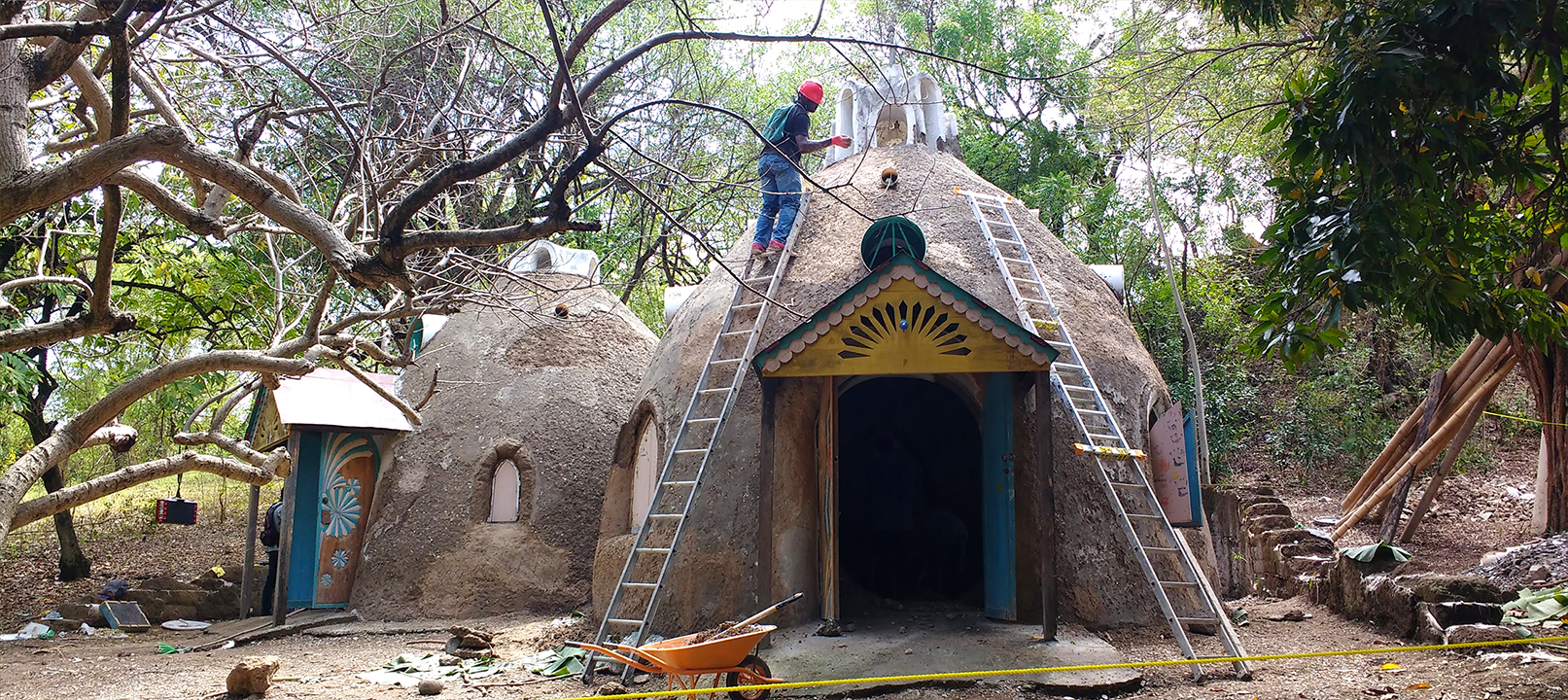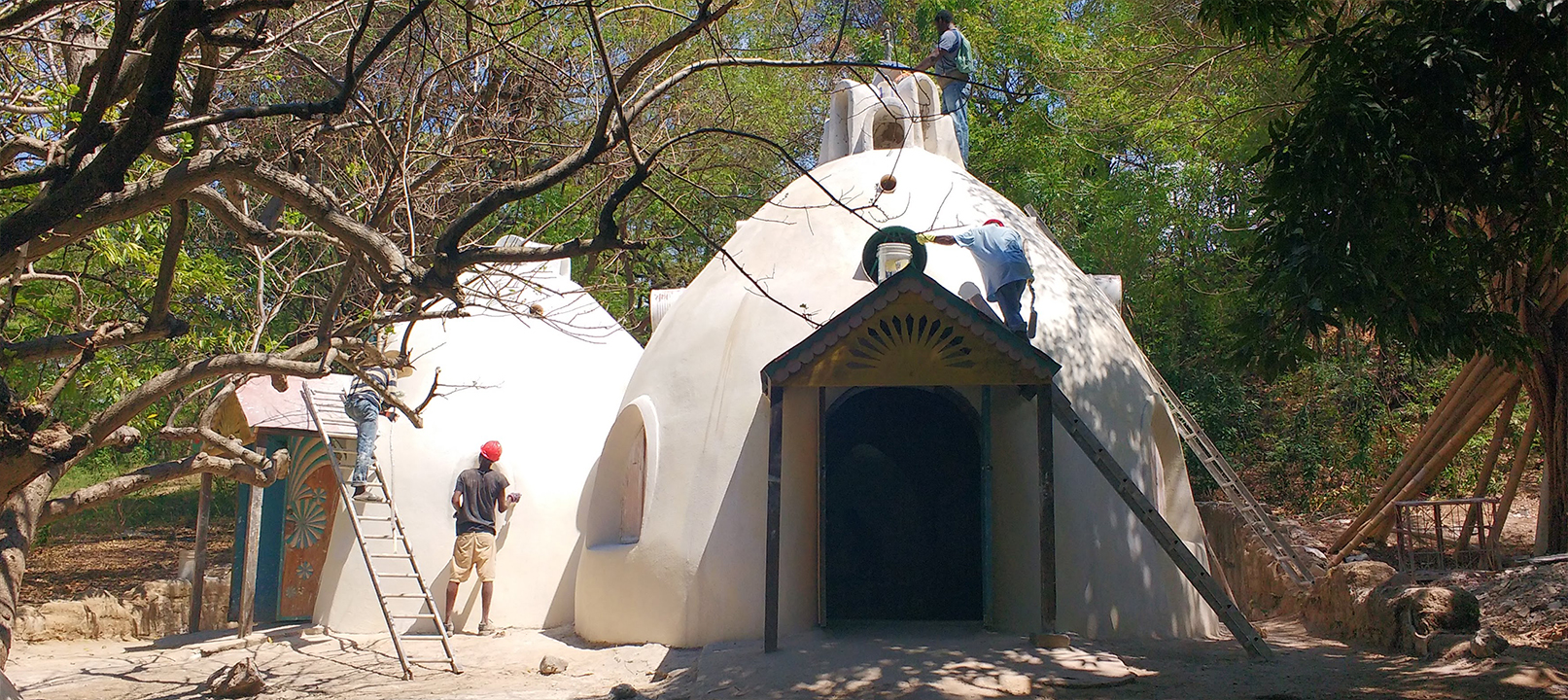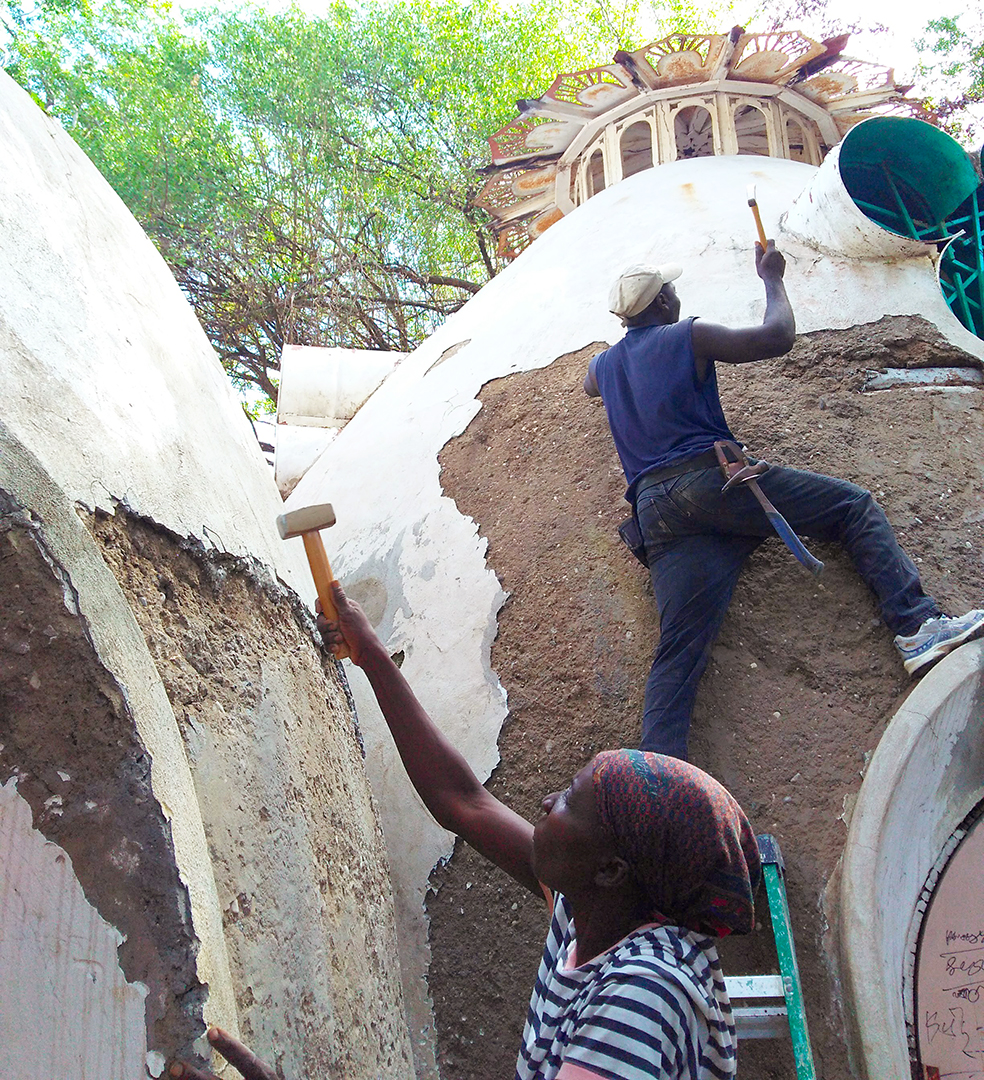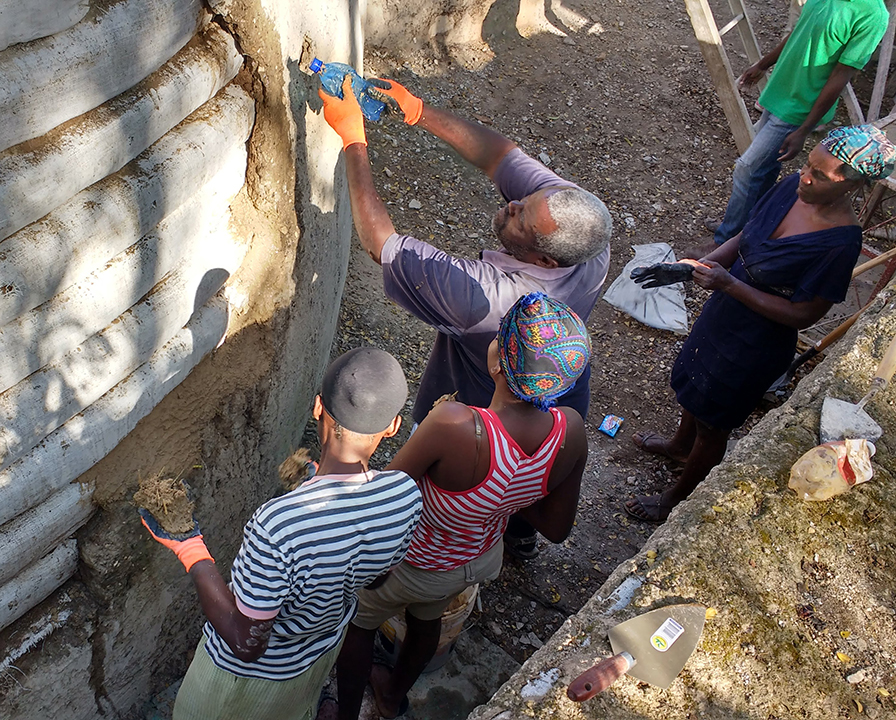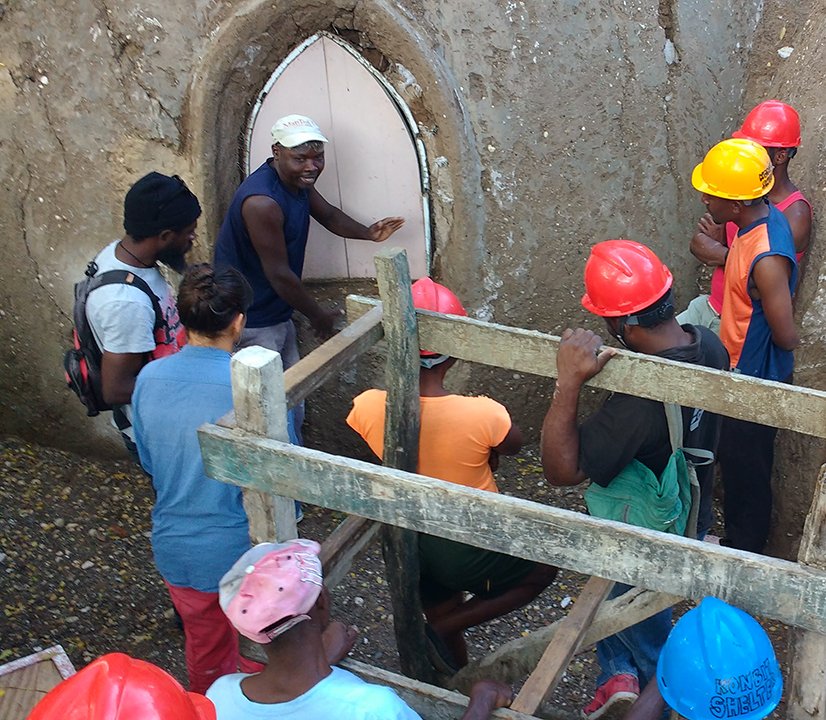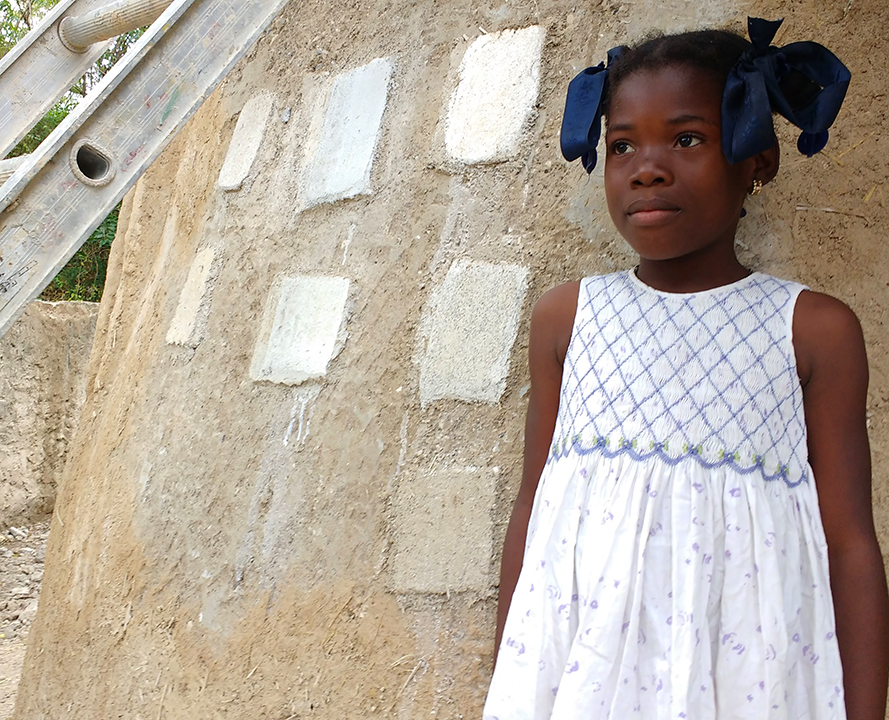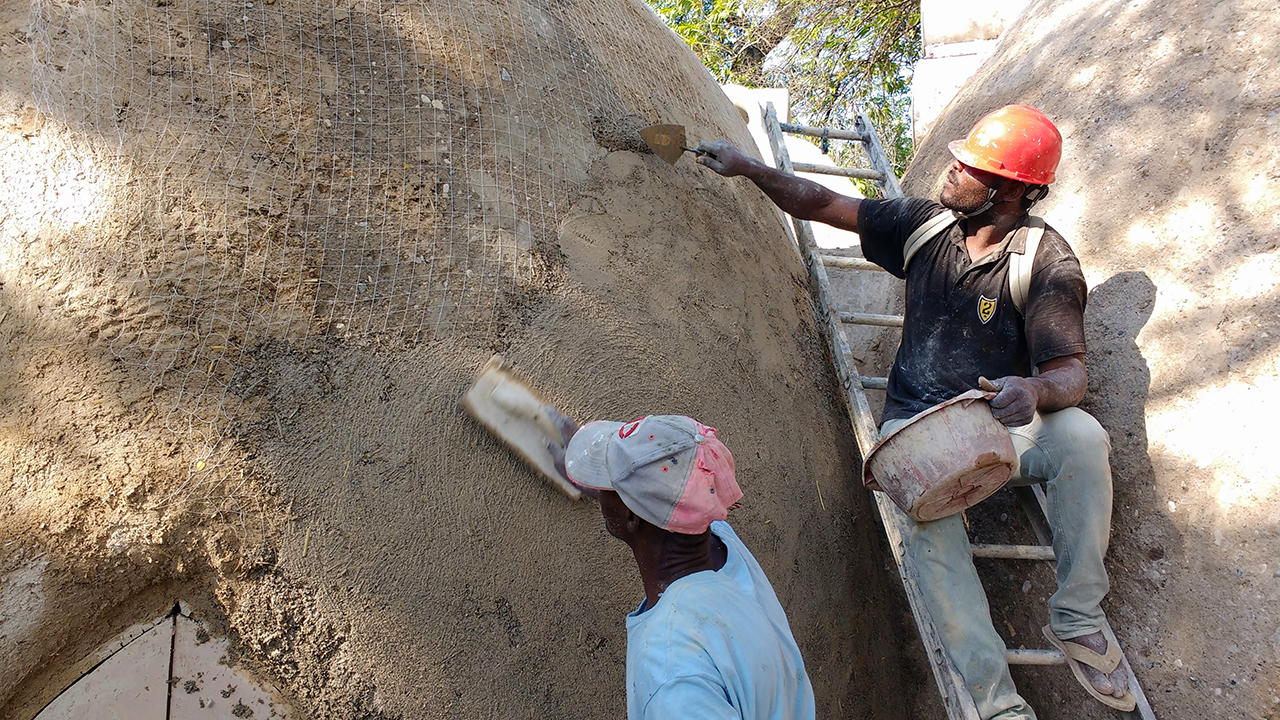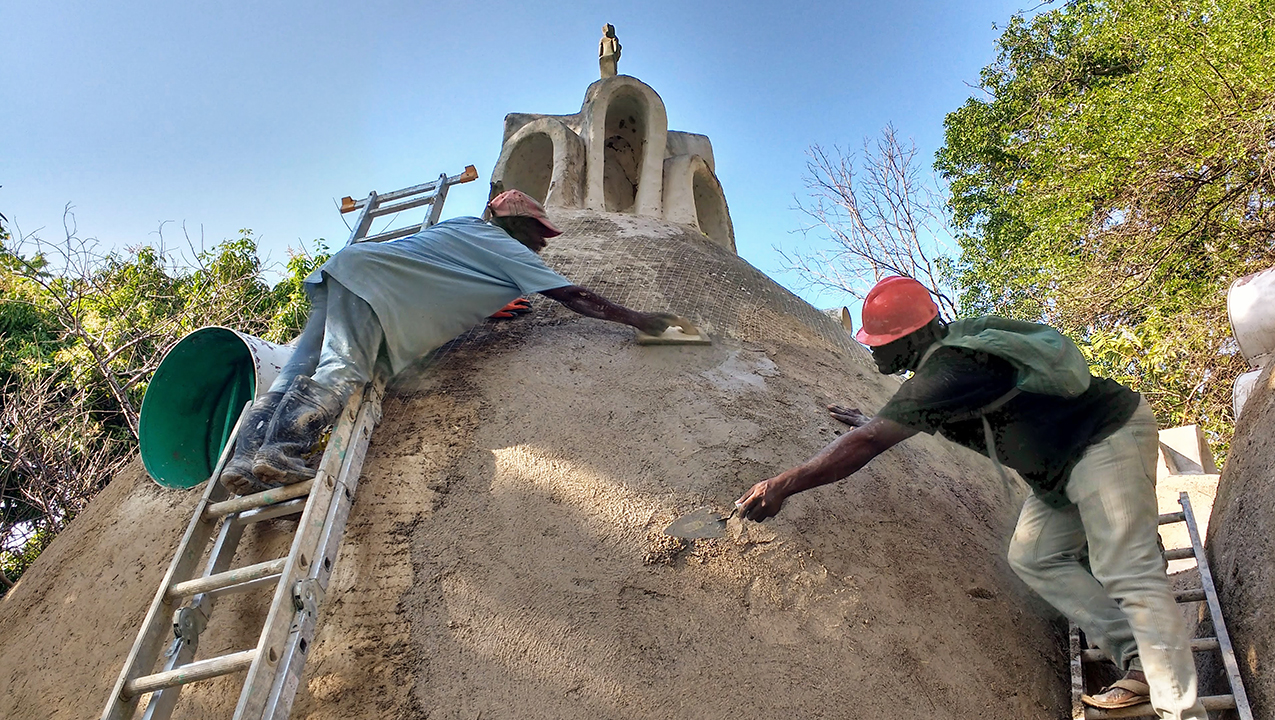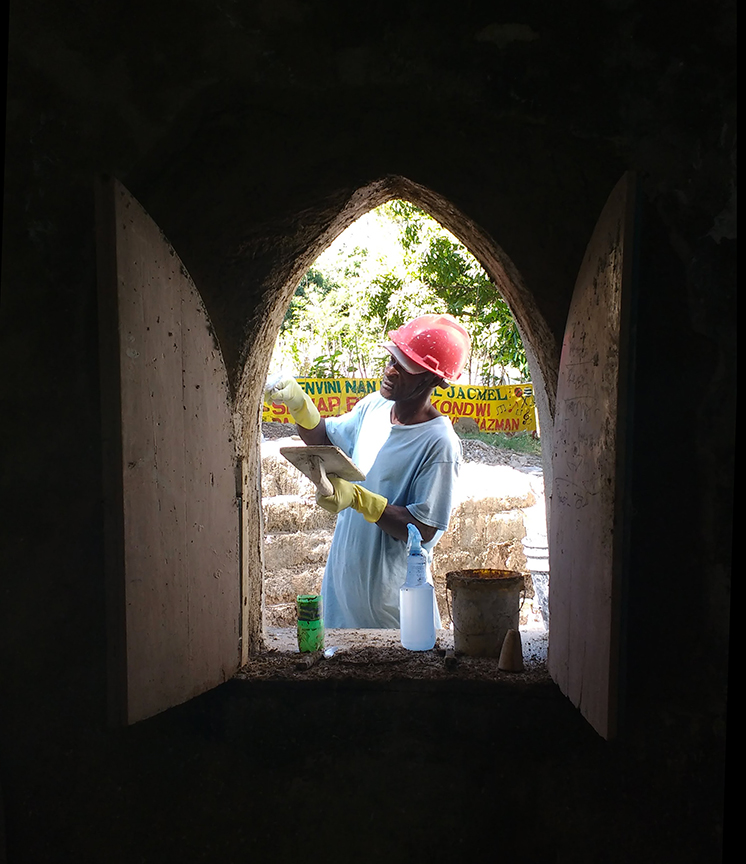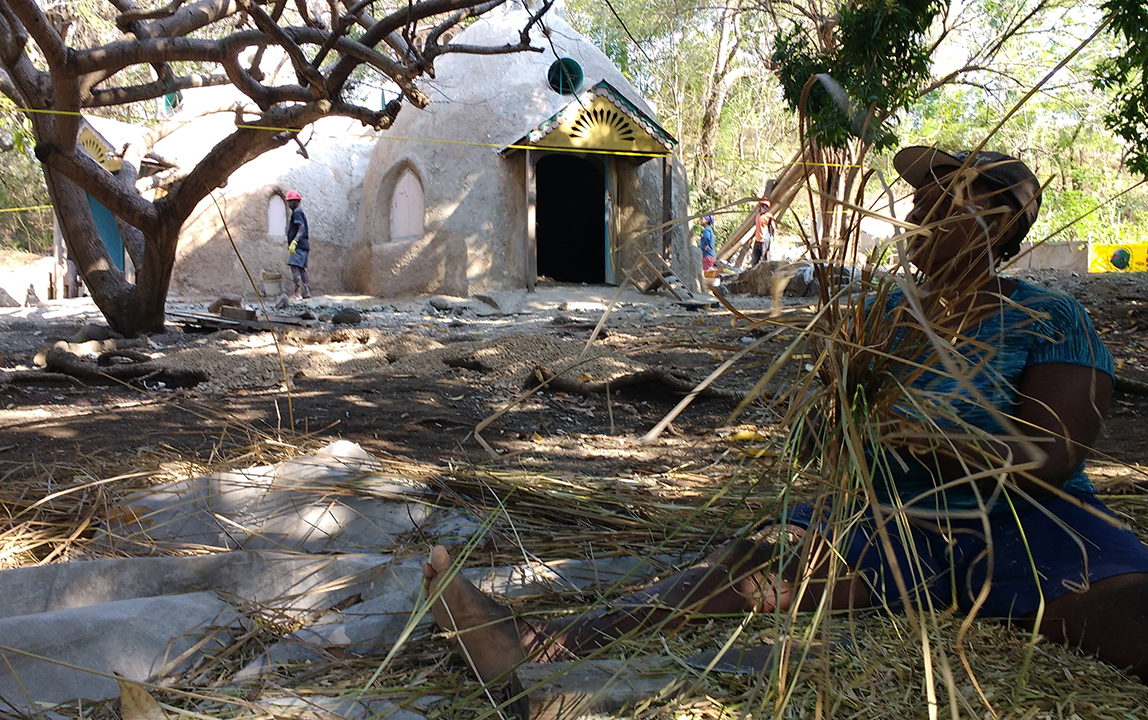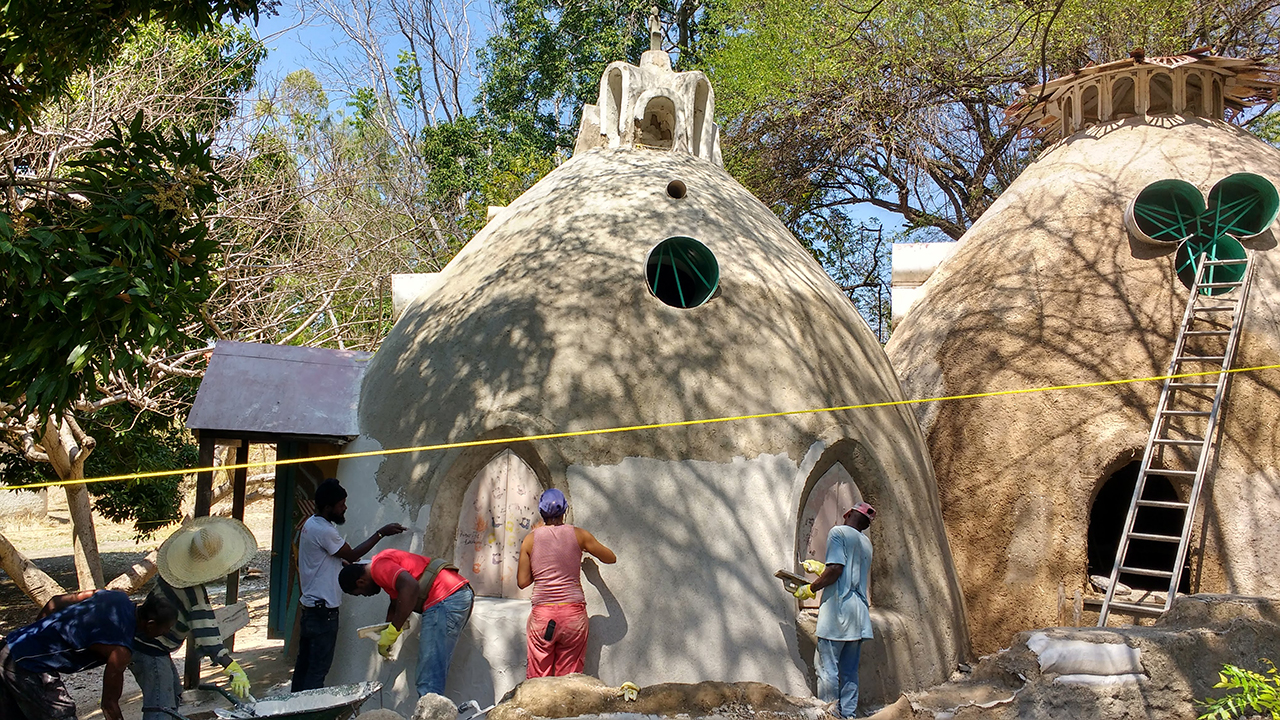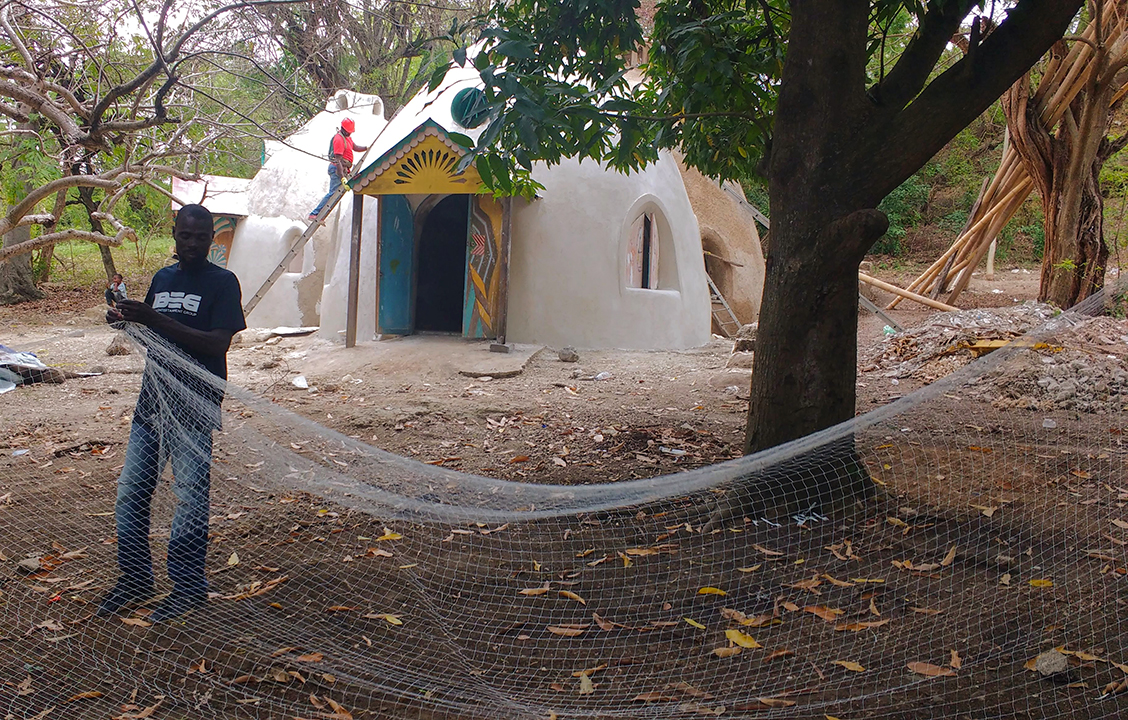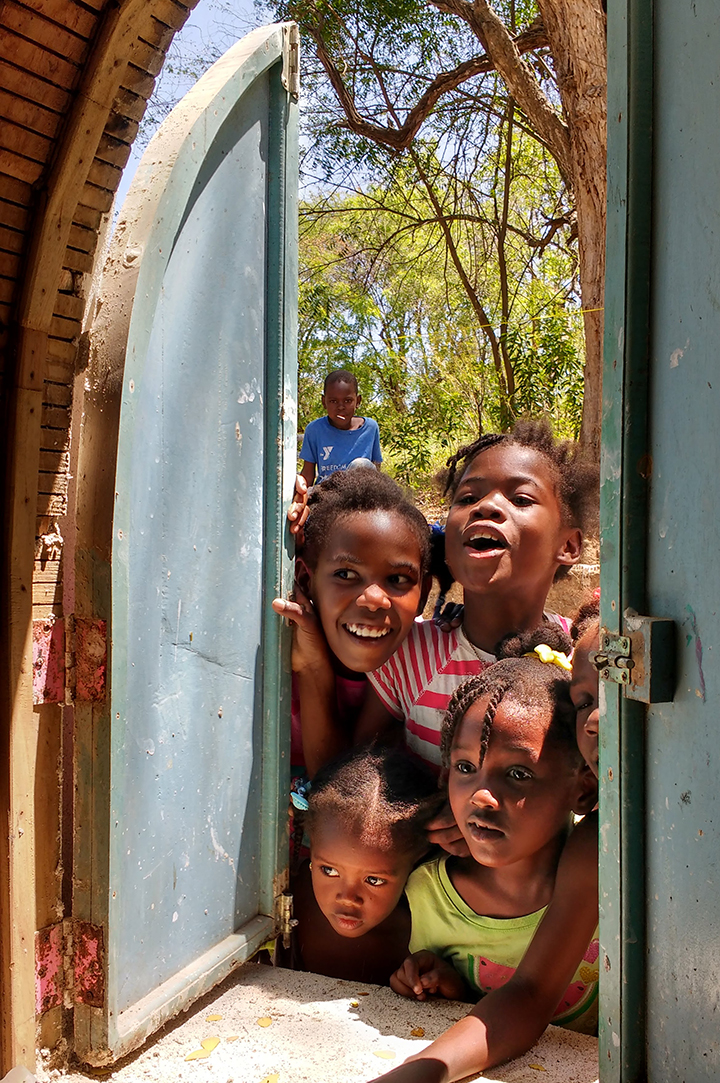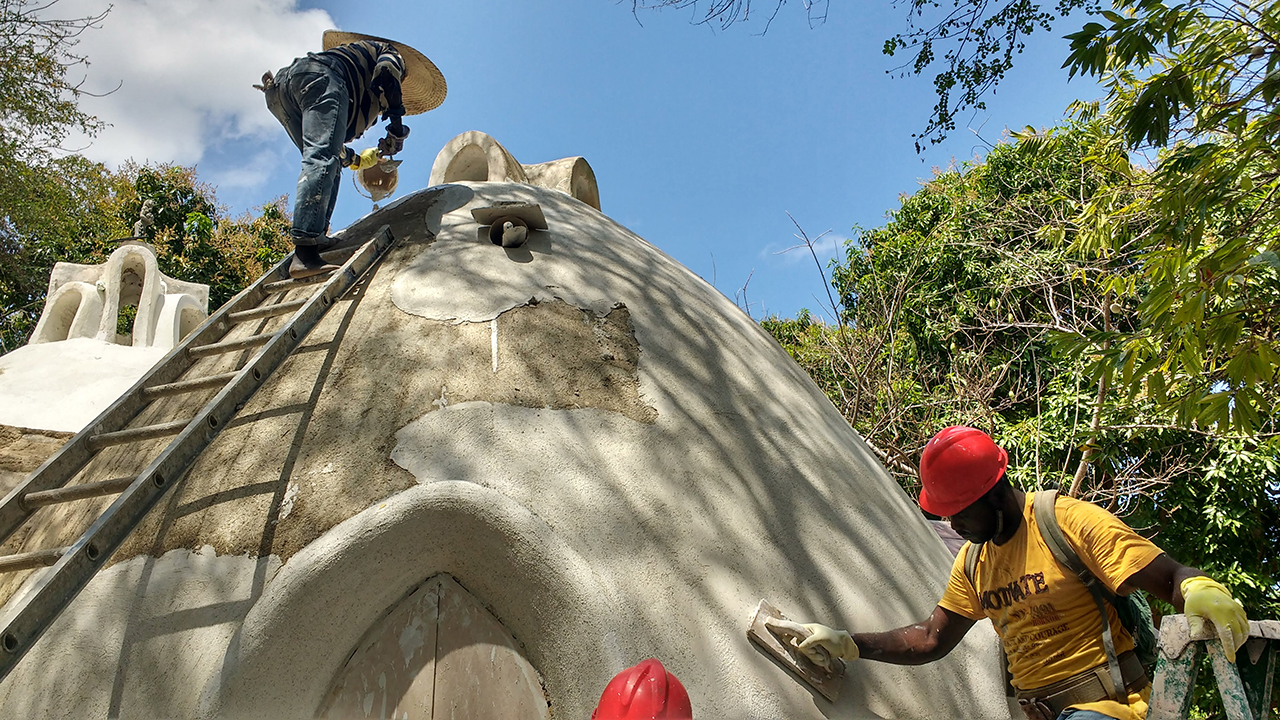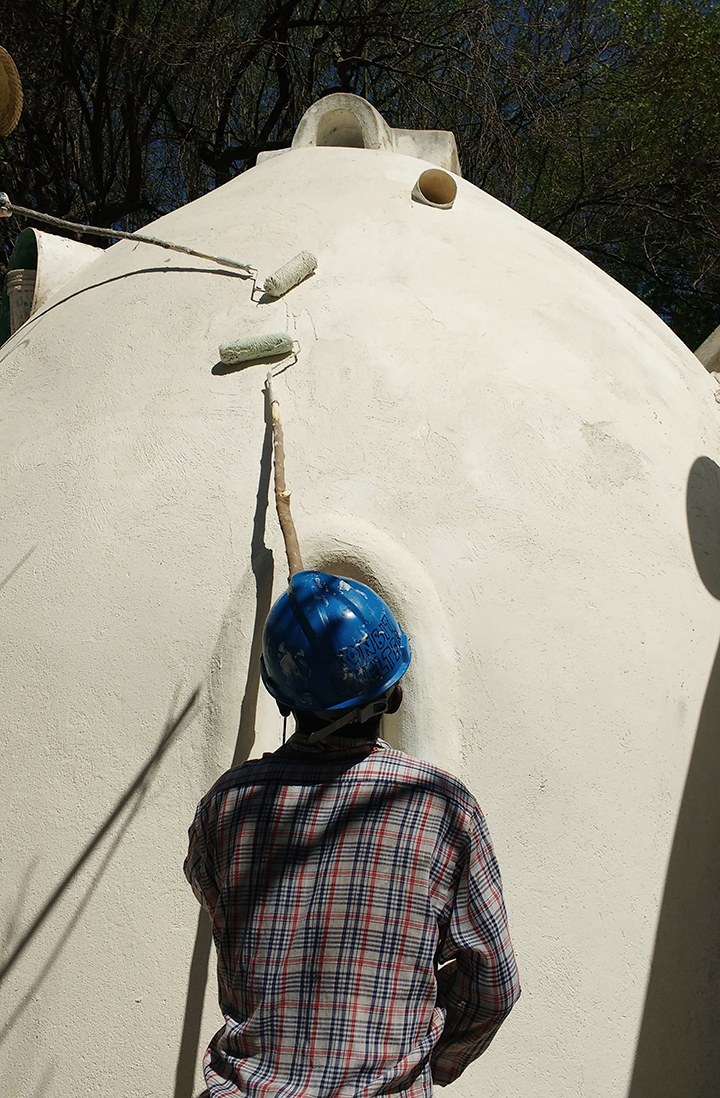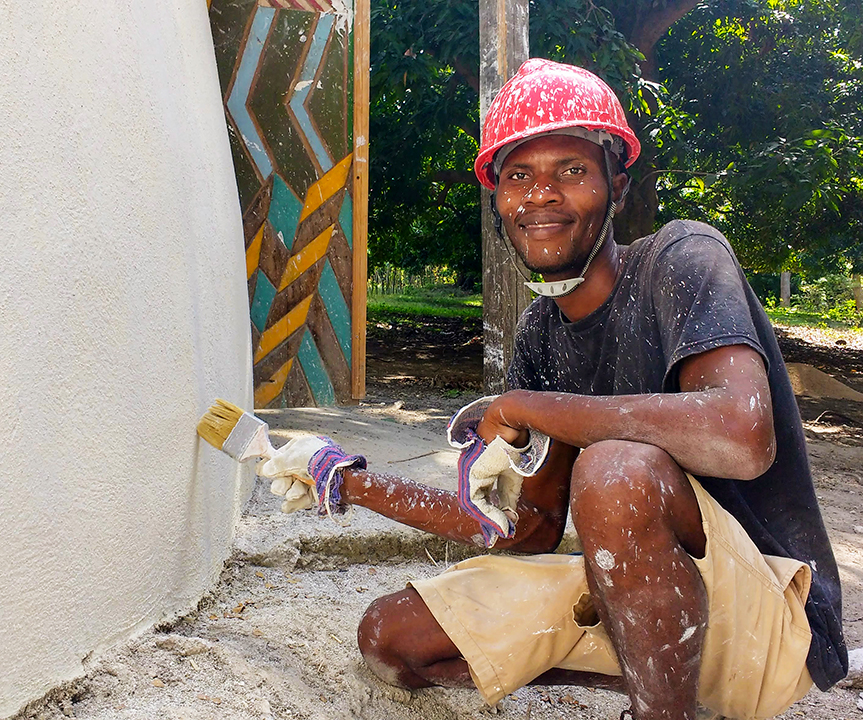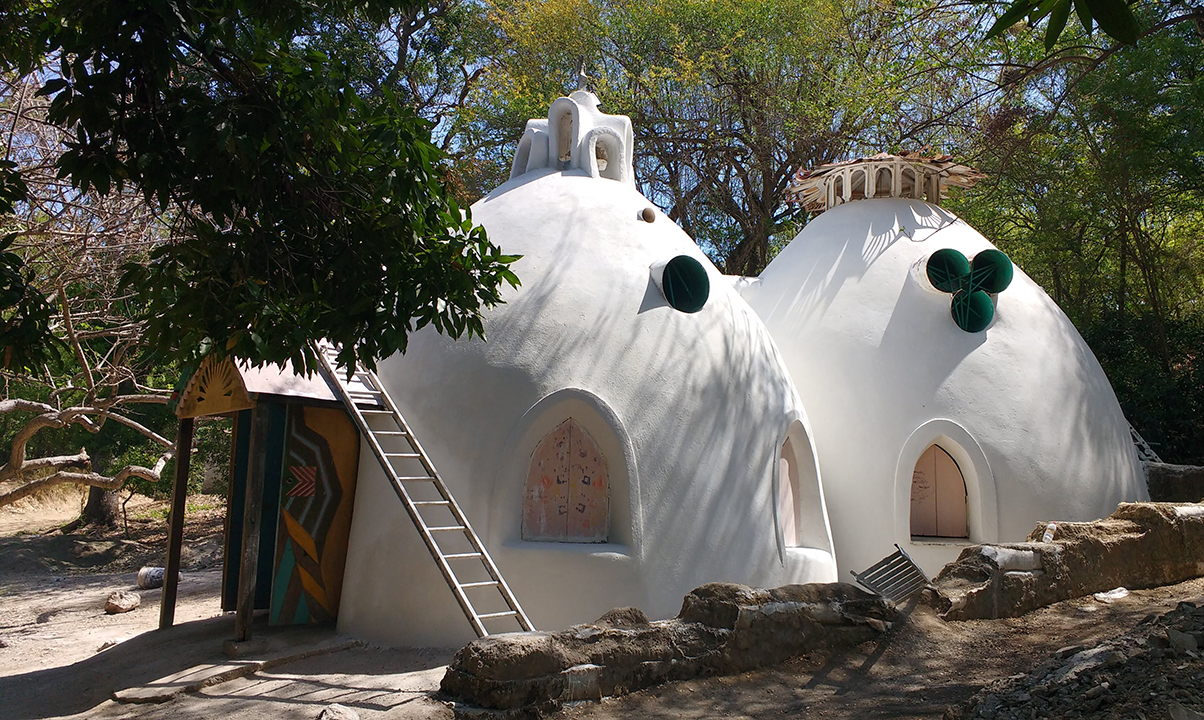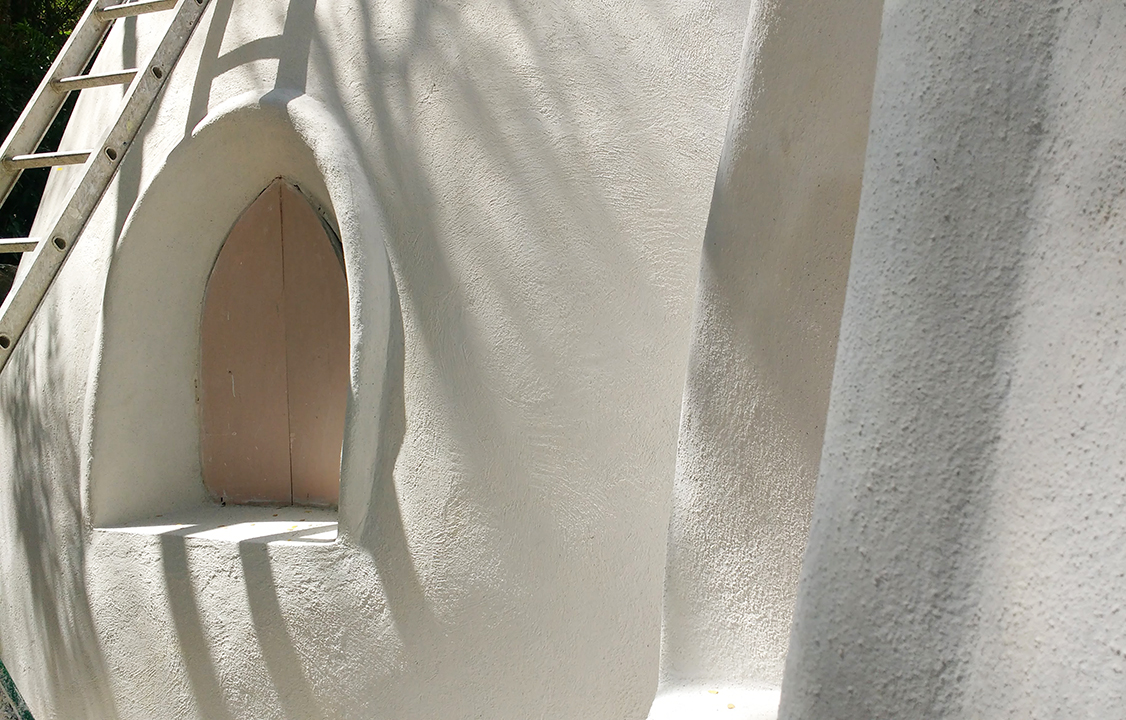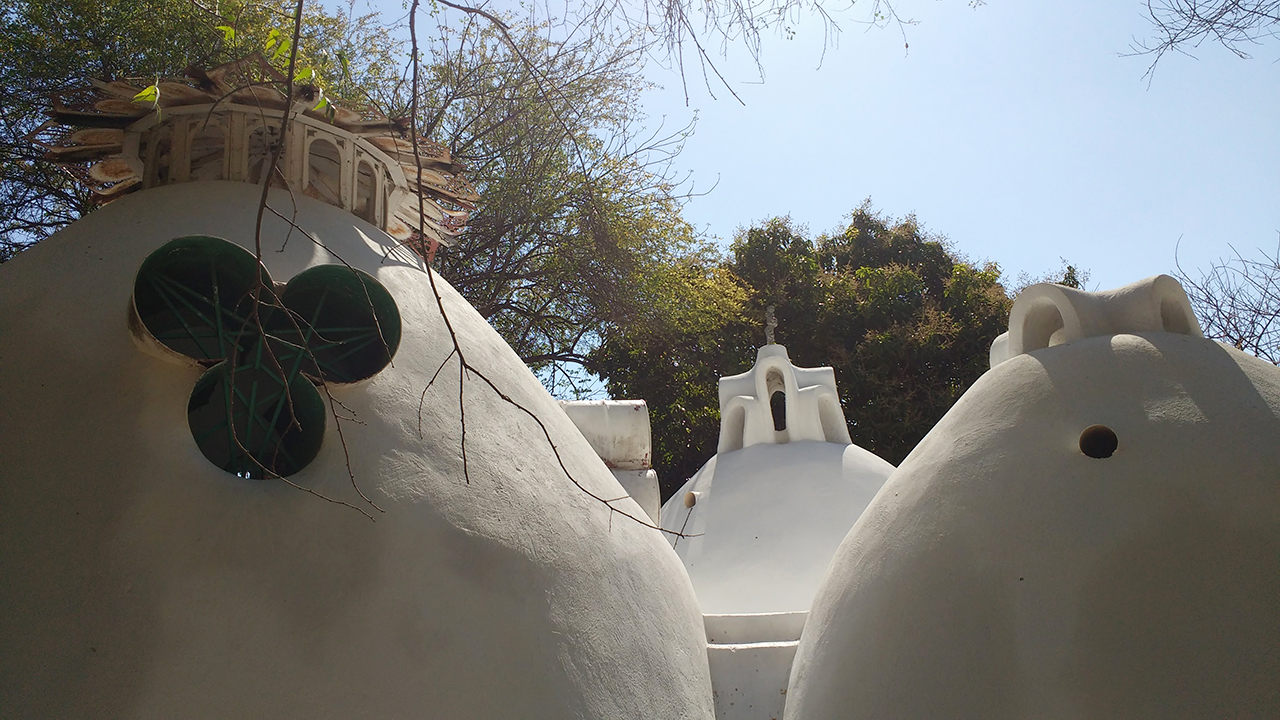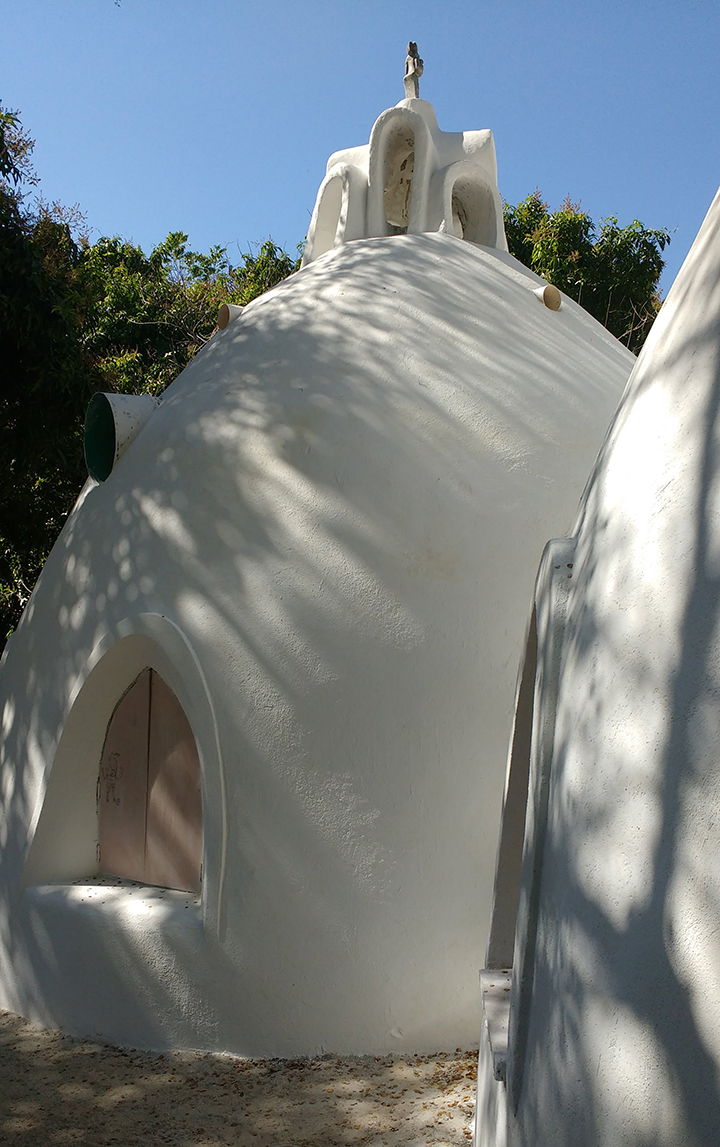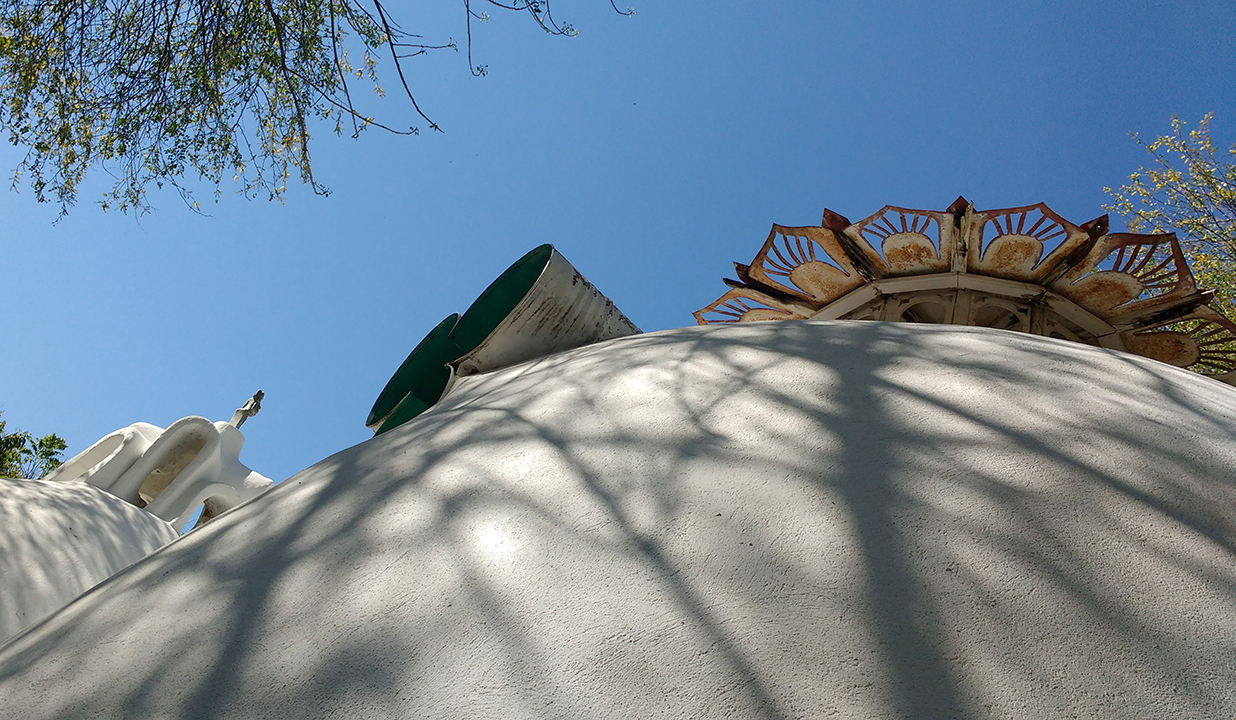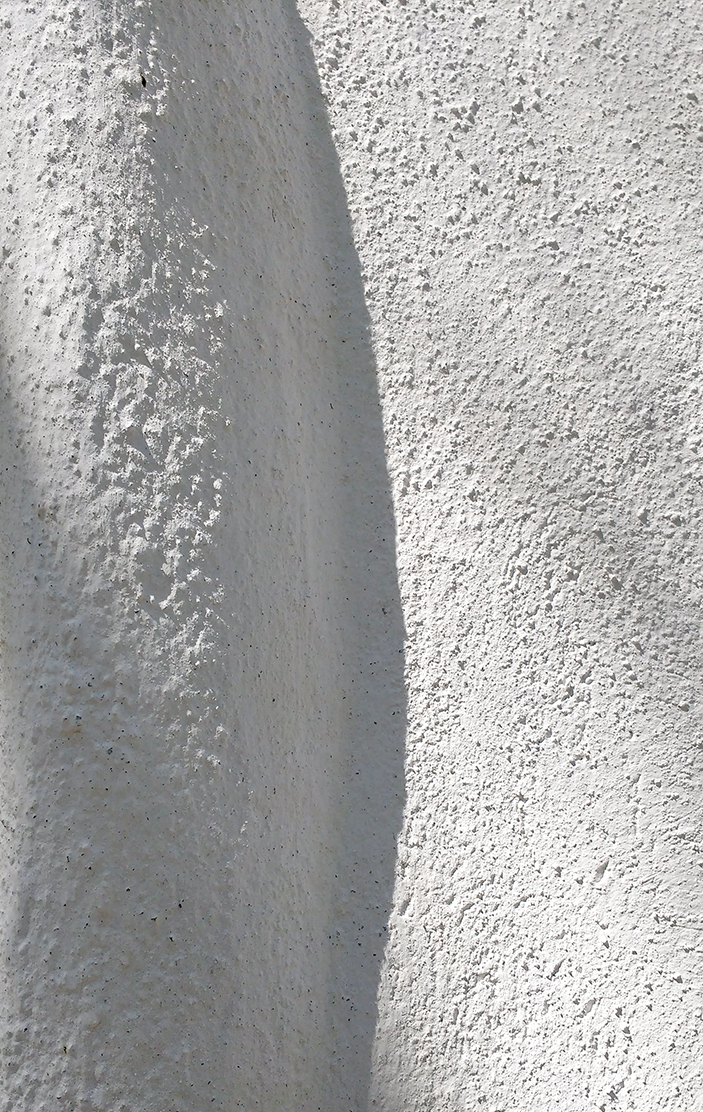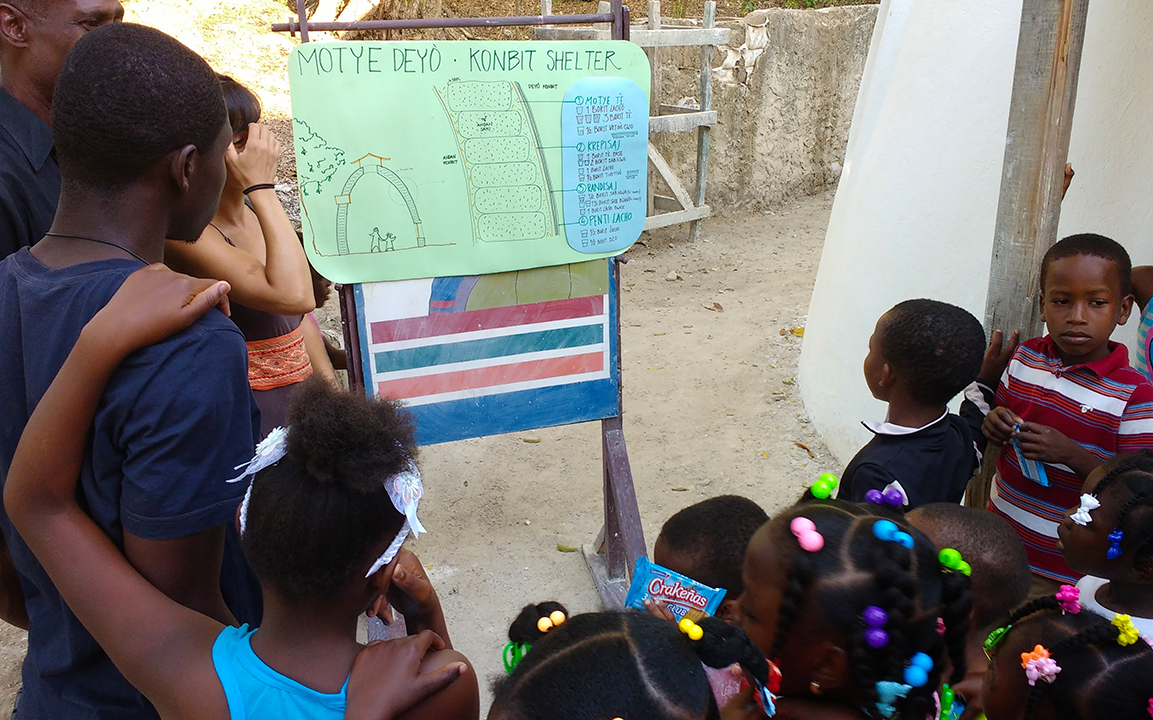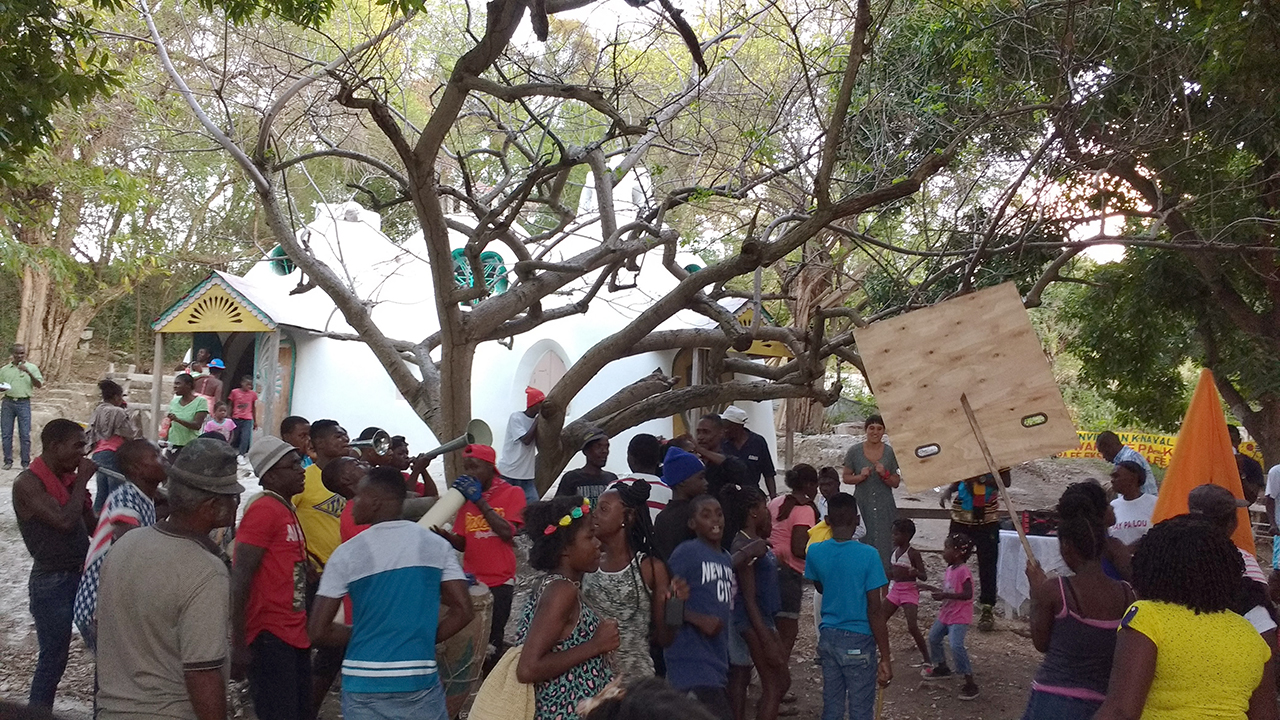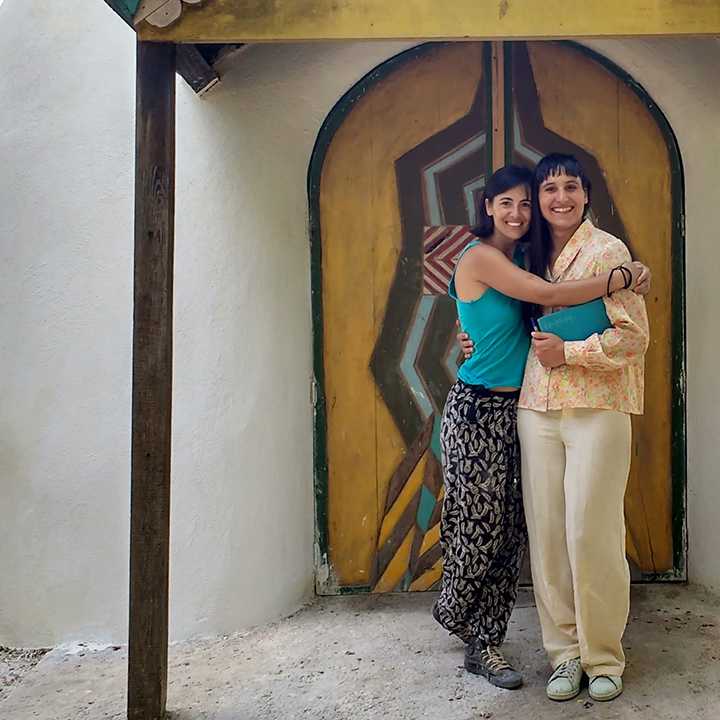Konbit Shelter Community Center renovation
Cormiers, Haiti . 2018
The Konbit Shelter Community Center was built in 2010 by the Heliotrope Foundation, the non-profit led by artist Swoon. The center was built after the magnitude 7 earthquake that hit Haiti that year as part of a larger disaster relief program that Heliotrope started in Cormiers, a village close to the earthquake epicenter. The Heliotrope team used Superadobe, this durable technique consists of sandbags filled with earth and stabilizers arranged in layers or long coils and resists seismic forces well.
Construction materials were scarce right after the earthquake. Lime, which is the most advisable material to plaster the earth walls, was impossible to find; so the original plaster was made with soil mixed with a fraction cement. Cement plasters, however, lack permeability, and accumulate humidity as they prevent the structures from drying. They also lack flexibility and can crack over time, allowing more humidity to permeate through the earth walls.
In March of 2018, Oficina and architect Tania Teixeira coordinated the intervention to repair the exterior of the Community Center and replace its damaged plaster with a lime-based plaster.
In addition to the building activities, this project—similar to previous projects—also served to provide a workshop for our friends in Cormiers, this time on the theoretical and hands-on aspects of lime plastering. It also served for us to learn about local construction techniques from the community. We shared information about the building potential of local materials and how they can be used for sustainable plastering techniques. All plaster materials that we used were natural and local: we used lime from the hill next to cormiers (20 min away by car), vetiver fibers (10 min walking), sand from the river that passes through the village, water from the well which is at a 3 minutes walking distance and earth from our surroundings.
During the 3 weeks of construction we trained 3 teams of 15 local people. The construction crews were a mixture of qualified construction workers and unskilled people of all ages and genders, which increased the breadth of our impact and allowed the team members to exchange knowledge among them. We established rotating weekly shifts to allow new people to join the team each week. In a country with an unemployment rate higher than 40% our system has a significant impact in the local economy and allows more people to learn new construction skills.
For the repair itself, we removed most of the existing plaster and then we applied three new layers of plaster. Each layer was composed of different proportions of lime, earth, sand and fibers. On top of the plaster we applied a lime wash—a very liquid “paint” composed by equal parts of water and lime putty. The lime wash will continue to be applied by the local crew once a year to keep the building impermeable to the heavy rains.
All the workers contributed with great enthusiasm, and this was key to achieve our goal in just three weeks. Every day we experienced creative problem solving and strong collaboration among team members. For example, when we needed 3 gigantic nets to cover the first layer of plaster and we had no commercial options, we met Telore, a fisherman from a village nearby, and he hand-knit a custom fishnet for our curved walls.
At the end of the workshop we made a poster with information on each different plaster. The workshop participants presented our new findings to the overall community and we ended our three weeks with a lively celebration. All the community embraced the natural plaster. Having taught and learned from the locals, we expect to provide the community the independence and confidence to work with these natural, locally available materials.
